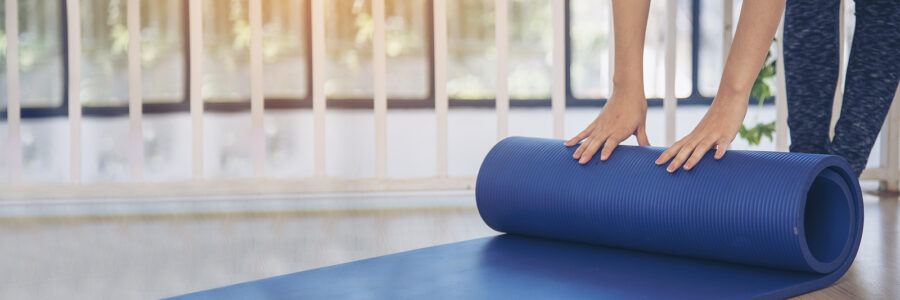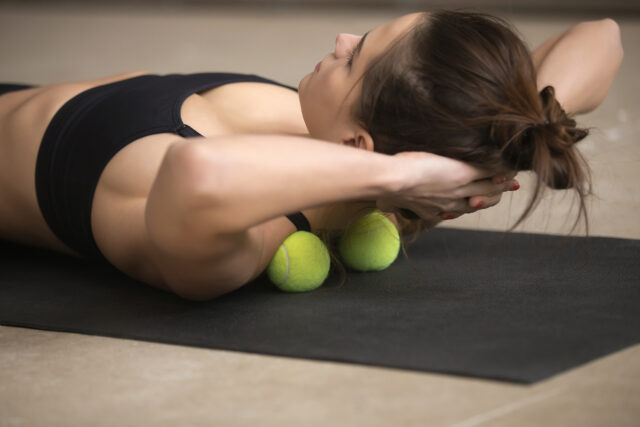 As a massage therapist, you spend your days helping others relax, de-stress, and ease their physical pain. However, in order to be an effective and healthy massage therapist, it’s important to prioritize your own self-care.
As a massage therapist, you spend your days helping others relax, de-stress, and ease their physical pain. However, in order to be an effective and healthy massage therapist, it’s important to prioritize your own self-care.
Self-care is not a luxury or indulgence; it’s an essential part of your job. Taking care of yourself physically, mentally, and emotionally will not only benefit you, but also your clients. Here are some reasons why self-care is so important for massage therapists:
- Preventing Burnout: Massage therapy can be physically demanding and emotionally draining. Without proper self-care, you may experience burnout, which can lead to exhaustion, apathy, and even physical illness. Taking breaks, getting enough sleep, and engaging in stress-relieving activities can help prevent burnout.
- Maintaining Physical Health: As a massage therapist, your body is your tool. If you don’t take care of it, you risk injury or chronic pain. Regular exercise, stretching, and maintaining good posture can help keep your body strong and healthy.
- Reducing Stress: Stress is a common issue for massage therapists, who may carry their clients’ emotions and physical tension with them. Engaging in activities that help you relax, such as meditation or yoga, can help you manage stress and improve your overall well-being.
- Enhancing Emotional Resilience: In addition to physical demands, massage therapy can also be emotionally taxing. You may encounter clients with difficult emotional issues, or simply feel drained by the constant emotional energy required for your work. Engaging in self-care activities such as journaling or talking to a therapist can help you build emotional resilience and stay balanced.
- Modeling Healthy Behaviors: As a healthcare provider, you are a role model for your clients. If you prioritize self-care and demonstrate healthy behaviors, your clients are more likely to do the same. This can lead to better health outcomes for both you and your clients.
So, what does self-care look like for a massage therapist? Here are some ideas:
- Schedule Regular Breaks: Take time between clients to stretch, rest, or engage in a relaxing activity.
- Maintain a Healthy Lifestyle: Exercise regularly, eat nutritious foods, and get enough sleep.
- Engage in Stress-Relieving Activities: Meditate, practice yoga, or take a relaxing bath.
- Seek Support: Talk to a therapist, join a support group, or find a mentor to help you manage the emotional demands of your work.
- Practice Self-Compassion: Remember that taking care of yourself is not selfish; it’s necessary. Treat yourself with kindness and understanding.
In conclusion, self-care is an essential part of being a successful and healthy massage therapist. By prioritizing your own well-being, you not only benefit yourself but also your clients. So, take the time to care for yourself – you deserve it!
Learn more about becoming a massage therapist and our massage school today!
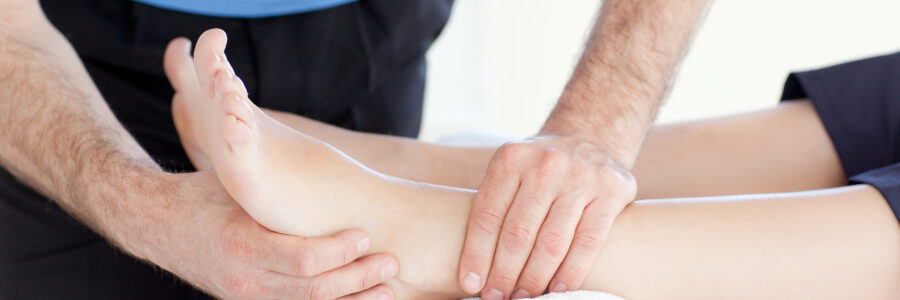
Massage Therapy and Injury Recovery
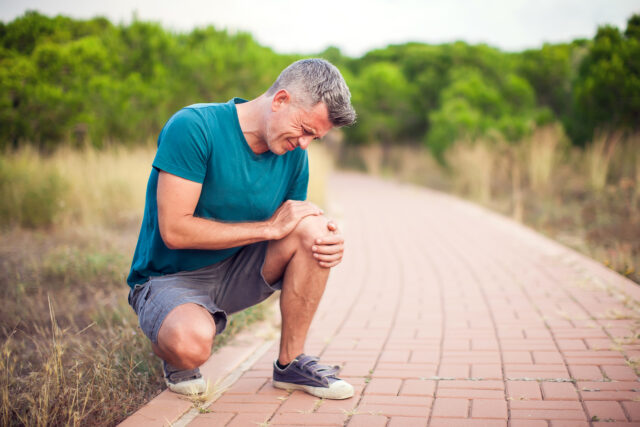 Massage therapy is a popular and effective treatment option for those recovering from injury. The hands-on manipulation of soft tissue can help reduce pain, swelling, and stiffness, as well as promote healing and improve overall function.
Massage therapy is a popular and effective treatment option for those recovering from injury. The hands-on manipulation of soft tissue can help reduce pain, swelling, and stiffness, as well as promote healing and improve overall function.
There are several different types of massage techniques that can be used for injury recovery, including Swedish massage, deep tissue massage, sports massage, and trigger point therapy. Each technique targets specific areas of the body and addresses different aspects of injury recovery.
For example, Swedish massage is a gentler form of massage that can be used to increase circulation and reduce muscle tension, making it ideal for early stages of injury recovery. Deep tissue massage, on the other hand, targets deep layers of muscle and connective tissue to release chronic tension and improve range of motion.
Sports massage is specifically designed for athletes and active individuals and can be used to treat a range of sports-related injuries, including sprains, strains, and overuse injuries. Trigger point therapy, meanwhile, focuses on the release of knots or tight areas of muscle that can cause pain and discomfort.
In addition to the physical benefits of massage therapy, it can also have a positive impact on mental health and well-being. Massage has been shown to reduce anxiety, depression, and stress, all of which can hinder the healing process.
It is important to note that massage therapy should be used in conjunction with other forms of treatment, such as physical therapy and medications, for optimal results. It is also important to work with a licensed massage therapist who has experience treating specific types of injuries and can tailor their techniques to meet your individual needs.
In conclusion, massage therapy can be a highly effective treatment option for those recovering from injury. By targeting specific areas of the body and promoting physical and mental well-being, massage therapy can help accelerate the healing process and improve overall function.
Learn more about the benefits of massage therapy and becoming a massage therapist.
Contact us today to learn more about our massage schools and our massage program
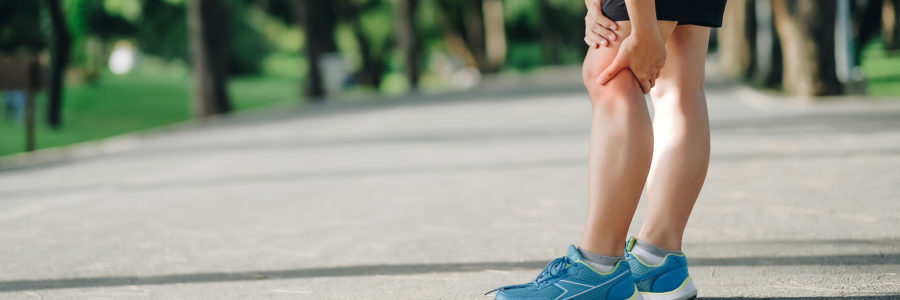
IT Band Syndrome
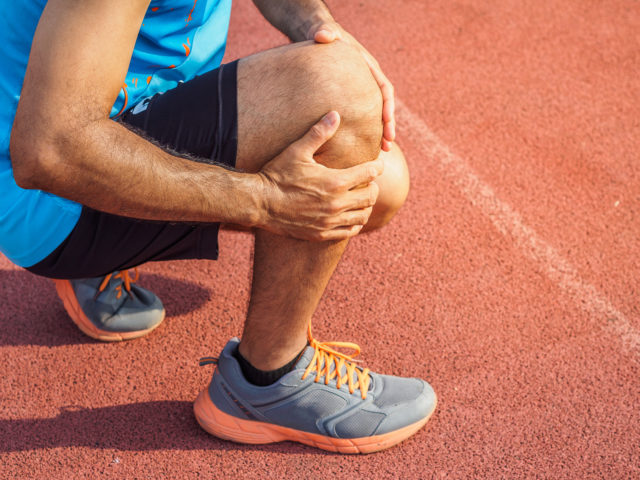
Did you know that engaging in activities that involve repetitive flexing and extending of knees can cause iliotibial band syndrome? Well, studies show that walking long distances, cycling and athletics, among others are some of the contributing factors. As a nurse, physical therapist, fitness coach or yoga instructor, you will always encounter clients with IT band injuries. According to experts, incorporating massage therapy with conventional treatment is one of the best approaches to manage IT band syndrome.
What Is IT Band Syndrome?
The IT band is a thick connective tissue that originates from the pelvic bone and extends laterally to the shinbone. The fibrous band works with hip muscles to stabilize lateral movements of the hip and knee. However, overworking the connective tissue with activities that require repetitive knee flexion and extension causes IT band syndrome. The overuse movements create friction between the band and the lateral femoral epicondyle, thus, causing discomfort when exercising, or moving. Signs and symptoms of IT band syndrome include:
- Patient reports feeling an irritating pain along the lateral side of the hip and the femoral epicondyle during motion.
- There is notable inflammation and swelling on the outer part of the knee.
- Slight pain is felt at the beginning of an exercise and increases with intensity as the activity progresses.
- Pain in the gluteal region caused by overstretching gluteus muscles.
- Experiencing a popping pain that results from the rubbing of IT band against your knee during movement.
- Tenderness on the lateral femoral and tibia epicondyles upon palpation
Diagnosing the IT Band Syndrome
Despite causing knee pain, iliotibial band syndrome is not the only cause of knee discomfort. Before making your diagnosis, ensure you take a history of the client’s complaints and their daily activities. Usually, the iliotibial band syndrome affects people who engage in activities that put a constant strain on the knees. A client who reports being a runner, bicyclist, hiker or athlete might be a candidate of iliotibial band syndrome.
After taking the history, the next essential step is to conduct a comprehensive physical assessment to determine the precise effected location. You can use some tests such as Noble’s test to assess for pain in the lateral femoral condyle. Additionally, using an Ober’s test will assist you in examining the IT band for tightness. A comprehensive physical examination will give you an insight on areas that need massage therapy; to determine the appropriate techniques for myofascial release.
Managing IT Band Contracture Syndrome with Massage Therapy
As a professional health worker, ensure that massage therapy is in your to-do interventions for iliotibial band syndrome. Offering a massage along with traditional treatment has proved to be effective in enhancing recovery from the IT band syndrome. Below are the benefits of massaging your patients:
- Relieve Lateral Leg Pain
In most cases, it’s a nagging pain resulting from IT band overuse that forces patients to seek professional intervention. Performing myofascial release massage on the lateral side of the effected leg relaxes the fibrous band and muscles from tension — thus alleviating the pain.
- Promote Healing
Nowadays, unique massage techniques aim to not only relieve pain but also to promote tissue healing. Addressing trigger points and hypertonicities of the leg muscles enhances blood circulation. Improved tissue perfusion allows delivery of oxygen and nutrients to enhance the healing of the injured tissues.
- Restore flexibility and Improve Mobility
A patient who is suffering from IT band syndrome often complains of inability to move comfortably. Massage therapy resolves muscle stiffness and tenderness, therefore refining motion and flexibility. Therefore, after several sessions, your patient will be able to resume daily activities with ease.
- Improve Posture
When the pain is intense, most people adopt bad postures in response to the discomfort. As a massage therapist, you are equipped with unique skills to resolve tension and inflammation of the effected regions. The relaxation and flexibility of the leg enable the patients to assume their normal and healthy posture.
- Alleviate Stress and Anxiety
Besides enhancing physical fitness, massage treatment helps to relieve the body from stress. Reduced anxiety in patients with IT band syndrome promotes healing and improves their emotional well-being.
What is the prognosis of Iliotibial Band Syndrome?
Typically, if you utilize the right treatment modalities, the prognosis of IT band friction syndrome is excellent. For optimum results, it is crucial to use a multifaceted approach when treating patients. Whether you are a nurse, physical therapist, or a fitness coach, integrating massage therapy with conventional treatment will yield a positive outcome.
Ultimately, adding massage therapy to your healthcare profession not only improves healthcare delivery to your clients but also makes you indispensable. Want to learn more about managing IT band syndrome with massage therapy? Contact our Seattle massage therapy schools today to discuss your massage career and educational options in Seattle, Tacoma, or Bellingham.
I addition you can also contact our partner massage therapy school; Seattle Clinical Massage School for information about a massage therapy career in Seattle, Washington.
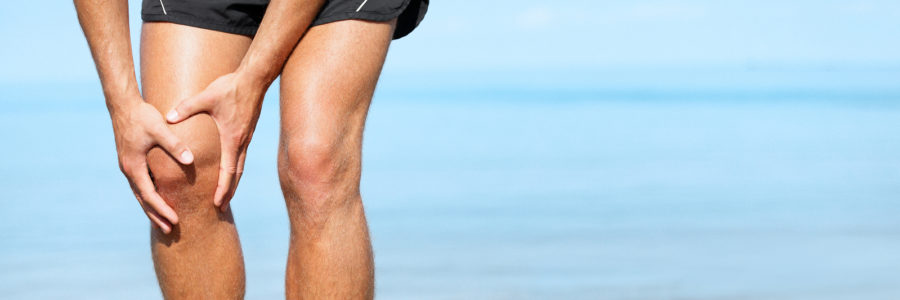
Anterior Cruciate Ligament Tears
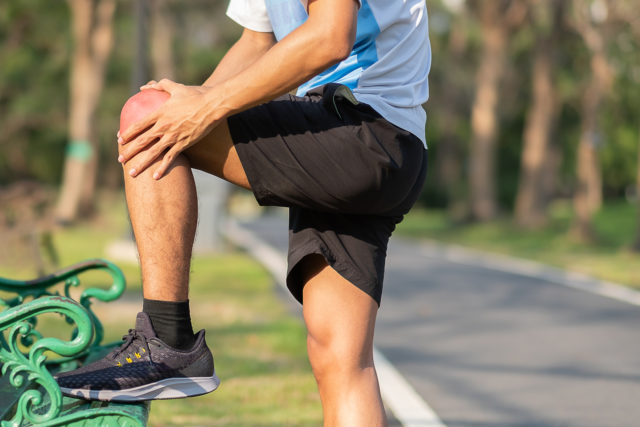 An Anterior Cruciate Ligament (ACL) tear is an injury impacting major ligaments in the knee. It is a key concern for many sports enthusiasts because such ACL tears occur mostly during sports activities that involve jumping, landing, sudden stops, or changes in direction.
An Anterior Cruciate Ligament (ACL) tear is an injury impacting major ligaments in the knee. It is a key concern for many sports enthusiasts because such ACL tears occur mostly during sports activities that involve jumping, landing, sudden stops, or changes in direction.
Examples of such sports include football, basketball, soccer, or downhill skiing. Also, these ruptures are more common in women than in men because of the difference in anatomy.
Once you sustain an ACL injury, you might require surgery, but that depends on factors like your activity level and severity of damage. With advancements in the field of reconstruction surgery, athletes can benefit from hamstring grafts, patellar tendon graft along with allografts. These prove effective in restoring both function and strength to the injured knee.
Even so, the ability of an athlete to go back to an active lifestyle successfully/full recovery after ACL reconstruction depends on the absence of three prevalent complications.
- Quadriceps weakness
- Flexion contracture (of the muscle group)
- Patellofemoral pain syndrome (PFPS)
Many physicians will use the patellofemoral pain syndrome as a “catch-all” diagnosis for the myriad of symptoms associated with anterior knee pain, especially after ACL reconstruction.
Signs and Symptoms of Anterior Cruciate Ligament Rupture
Once you sustain the injury, you will hear a popping sound from your knee. Other common symptoms include:
- Pain and swelling
- Loss of full range motion
- Discomfort when walking
- Joint tenderness
- Inability to bear leg weight even with minimal pain
- Feeling of instability
Causes
Several movements can cause an anterior cruciate ligament tear. These include:
- Slowing down during a run
- Incorrectly landing from a jump
- Rapidly changing direction
- Stopping suddenly
- Direct contact or collision like during a tackle
- When a knee is twisted or bent backward
While sport accidents are the most common causes of ACL injuries, you can sustain an ACL tear from missing a step in a staircase, falling off a ladder, or being in a car accident.
Risk factors
There are several risk factors for an ACL injury, and they include:
- Gender
- Active involvement in sports like football, gymnastics, basketball, soccer, and downhill skiing
- Using defective sport equipment like ski bindings
- Wearing ill-fitting sportswear
- Having a history of an ACL tear
Outcome and treatment
When you experience an ACL injury, you might not be able to walk correctly. An ACL injury causes a partial or complete tear of tissue and is usually very painful. Once you visit a doctor, they will recommend treatment based on the severity of the injury. Treatment options include first aid, medications, physical therapy, or surgery.
Massage Therapy for Anterior Cruciate Ligament Tear
One aspect of physical therapy for ACL is massage. Therapeutic massage therapy has the following benefits:
- Reduce pain and swelling (inflammation)
- Increase blood circulation and joint mobility
- Accelerate the healing process
- Lower the aggregation of scar tissue forming around the site of the injury
During a therapeutic massage, therapists target surrounding muscles, joints, or other specific structures to reduce strain. And once you’ve achieved success in ensuring they’re relaxed, a physician can then start restoring them to their proper alignment and flexibility.
Massage therapy is considered a safe and effective complementary treatment for many muscle and joint problems—including ACL. The type of massage and the number of sessions you will require will depend on your injury. At the end of all of your sessions, you will have regained full range of motion without any pain.
While massage therapy is effective in treating ACL, it must be done correctly for maximum results. Ensure you get your massage therapy from a professional therapist. If you would like to learn more about massage therapy or attend massage school, call us today. Also contact the Northwest Academy admissions department for any massage related questions.

Massage Therapy and Cardiovascular Health
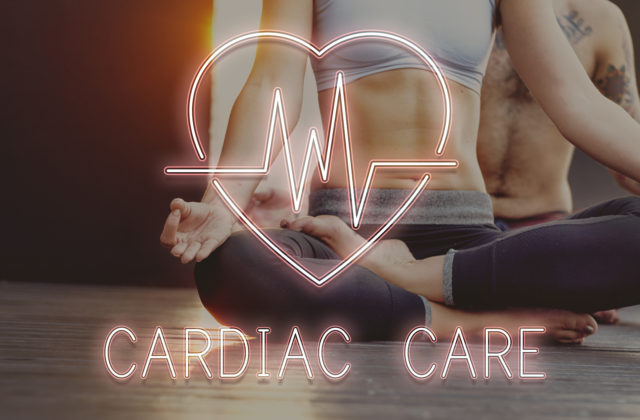
The Centers for Disease Control and Prevention reports that 1 in every 4 American deaths is directly related to heart disease. Conditions like coronary heart disease, cardiomyopathy, and other cardiovascular ailments kill over 600,000 people each year.
Massage therapy offers clients with cardiovascular issues many benefits that can help them improve their cardiovascular health and reduce their risk of stroke and heart attack.
What Contributes to Cardiovascular Disease?
There are three major factors that contribute to the development of heart disease.
These conditions are caused by structural abnormalities present at the time of birth.
- Viral infections
Myocarditis is damage to the heart due to certain viruses.
- Lifestyle Choices
Daily habits are currently the biggest contributor to heart disease.
- Smoking
- Poor diet
- Lack of exercise
- Diabetes
- Obesity
- Chronic stress
How Stress and Pain Affect the Heart
When a person experiences a painful or stressful event, the brain releases the hormones cortisol and adrenaline. These chemicals prepare the body to fight or run away from dangerous situations. The body responds by tensing muscles, shortening the breath, and increasing the heart rate.
This response, however, is only supposed to be short-term. Too much of these hormones can fatigue the body, especially the cardiovascular system. Without relief, long-term stress or chronic pain will weaken the heart muscle. Combined with less-than-healthy lifestyle choices, these factors can lead to heart disease.
How Massage Supports Cardiovascular Health
Massage therapy helps patients with cardiac issues address some of the factors that may be contributing to their condition. In conjunction with doctor-prescribed protocols, massage also helps patients manage some of the side effects of treatment.
- Induce states of physical and mental relaxation, which can help alleviate the effects of chronic stress and anxiety on the whole body.
- Loosen tight muscles and increase blood flow, which improves overall circulation and decreases the chances of stroke-causing clots.
- Alleviate chronic pain, which helps interrupt the brain’s “fight or flight” response.
- Reduce anxiety before or after surgical procedures.
Some common side effects from traditional drug therapies used to treat heart disease can be treated effectively with massage.
- Abdominal pain
- Headache
- Muscle aches
Precautions
While massage is generally safe and effective, there are some cautions to keep in mind when working with cardiac patients.
- Those on blood thinning drugs should avoid vigorous or deep tissue techniques, as these can cause bruising, inflammation, or tissue damage.
- Massage is not recommended for those with low blood pressure.
- Patients with a history of blood clots should avoid Swedish techniques.
- Therapists should avoid manipulating the area around pacemakers, stents, or other implanted devices.
- Patients with signs of congestive heart failure should start with short massages, and slowly work up to longer sessions, as tolerated.
Recent studies also who that consistent massage therapy can reduce blood pressure and heart rate. High blood pressure and rate are major factors in heart attack risk.
Patients who combine traditional medical treatments with massage techniques experience an increase in energy, physical relaxation, and mental focus. This can help them recover faster from surgical procedures, or avoid major cardiovascular events.

Kinesiology Taping in a Massage Practice
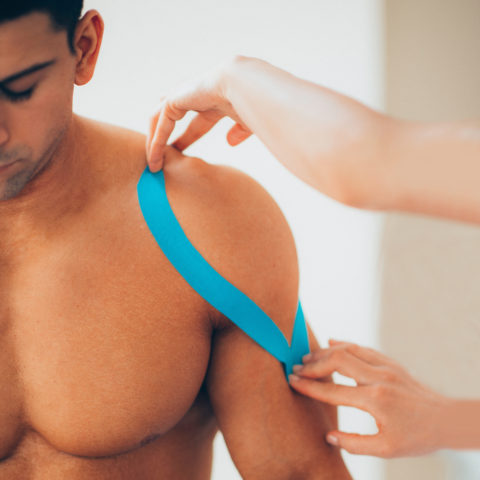
Since the 1970s, athletes have been using kinesiology taping to help them heal faster and build stronger muscles. Therapists have recently started using taping methods to bring those same benefits to their clients. Massage therapists can use taping to prolong relief and increase the body’s natural ability to heal itself.
What is Kinesiology Taping?
Kinesiology studies the body, and how it uses each part to move. Using knowledge of physiology, biomechanics, and psychology, the kinesiologist seeks to improve strength and muscle condition.
Kinesiology tape is a thin, stretchy fabric that adheres to the skin with acrylic adhesives. The adhesive itself is mild on the skin but very strong. The tape is waterproof and can stay in place up to five days. Usually made of brightly colored cotton, it has the same thickness and elasticity of healthy skin. It is designed to not cause any pinching, binding, or restrictions.
When applied to the skin, the tape gently lifts surrounding skin, allowing for a better flow of interstitial and lymph fluids. These fluids help remove dead cells and other waste caused by injury or a hard workout. They also deliver vital nutrients that cells need to repair themselves.
Interstitial fluids are also responsible for facilitating intercellular communication. When muscles cells are able to easily send and receive the electrical impulses that stimulate muscle movement, coordination and flexibility are dramatically increased.
Benefits of Taping
When applied around problematic joints and muscles, taping increases the healing and pain relieving properties gained from other therapy methods.
- Reduce painful inflammation by allowing the removal of cellular waste.
- Reduce pressure on nerve endings by lifting the skin away from pain receptors.
- Relax hypertonic muscles that make proper movement and posture impossible.
- Revive dying or inhibited muscles by restoring needed nutrients and fluids.
Taping allows the body to repair cell damage caused by injury. This allows muscles to restore or improve strength and proper function.
Kinesiology tape is a useful addition in the treatment of many common disorders.
- Sprained or strained muscles and ligaments
- Bruising
- Joint realignment and instability
- Rounded shoulders or spine
- Recently healed fractures
- Tendonitis
- Arthritis
- Fibromyalgia
Taping and Massage Therapy
Patients with chronic conditions benefit most from a combination of massage therapy and taping. When tape is applied after massage:
- Muscles that have been stretched and warmed by massage will stay loose longer.
- The body can remove lactic acid more easily, which decreases soreness after deep tissue techniques.
- Softens scar tissue and fascial adhesions so future sessions can be more productive.
- The natural pain relieving ability of massage will last longer.
- Added stability will keep muscles from moving out of alignment.
Tape can be safely applied to any body part. Different application methods encourage pain relief, structural support, and other therapeutic goals.
Kinesiology taping is an effective addition to any physical therapy routine. It can be used to treat a variety of musculoskeletal disorders and injuries in a noninvasive manner. When therapists add taping as a final touch to their therapy process, clients increase healing, flexibility, and muscles strength while reducing pain, swelling, and possible injury.
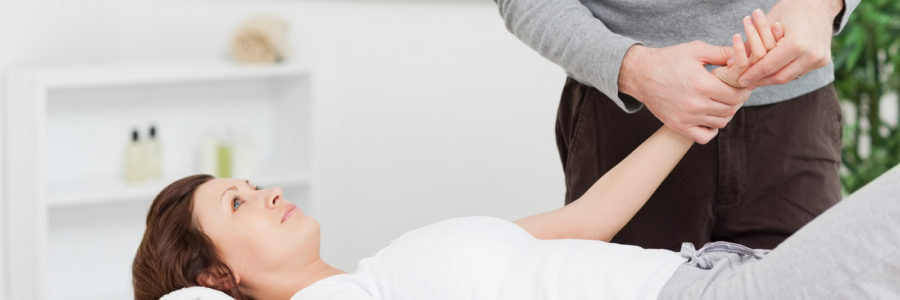
Carpal Tunnel Syndrome: What is it? And How Do I Relieve it?
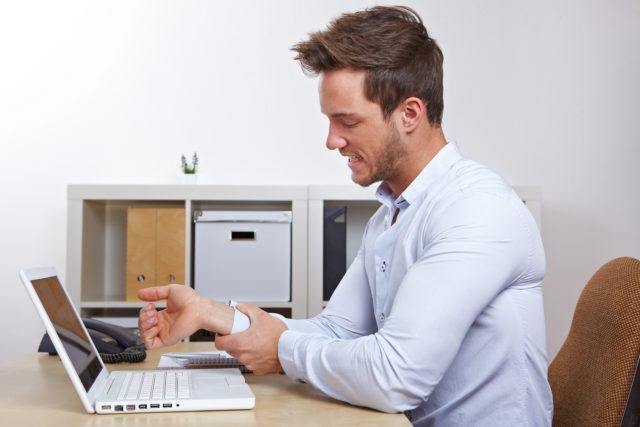
In our fast-paced, technology-addicted world, Carpal Tunnel Syndrome is a common complaint. The stiff muscles and shooting pain sufferers experience can have a significantly negative impact on daily life. As a professional therapist or bodyworker, it’s likely you will work with a client who has Carpal Tunnel Syndrome. Understanding this increasingly common condition will allow you to help your clients achieve maximum relief.
What is Carpal Tunnel Syndrome?
Carpal Tunnel Syndrome occurs when pressure is exerted on the median nerve that runs through the arm and wrist. This nerve controls motion and feeling in all digits except the little finger. When the nerve reaches the wrist, it runs through a narrow structure of bone and ligament called the carpal tunnel. Constant pressure on the nerve causes it to press against the bony parts of the structure. If left untreated, the nerve will sustain damage that can cause a variety of symptoms.
- Numbness
- Loss of muscle strength
- Tingling
- Pain in fingers, hand, or forearm
- Many sufferers first notice their symptoms at night.
Getting a Diagnosis
As always, patients should seek an official diagnosis from their primary medical physician. The doctor will start with a medical history. People with arthritis, hypothyroidism, and diabetes are at higher risk of developing the condition. The doctor will ask about recent injuries or accidents affecting the head, shoulders, arms, or hands. They will also examine your daily routine. Those with jobs that require small, repetitive movements of the hands and wrists have a greater chance of their symptoms being caused by Carpal Tunnel Syndrome.
The doctor then performs a physical examination. They will check muscle strength, sensation (the ability to feel), and the general appearance of the head, neck, shoulders, arms, wrists, and hands. Some specialists may order blood or nerve tests to verify results.
Traditional Treatment Methods
Depending on the severity of symptoms, conventional treatment options for Carpal Tunnel Syndrome vary. Milder symptoms can often be treated effectively at home.
- Stop any activities that may be causing symptoms. If that is not possible, try to rest your wrists and hands often.
- Place an ice pack on wrists for 10-15 minutes at a time up to 2 times per hour to reduce discomfort.
- N-SAIDs, like Ibuprofen or Naproxen Sodium, reduce painful swelling.
- Wearing a wrist splint while sleeping can lessen pressure on the median nerve.
If symptoms are allowed to progress, more severe interventions may be necessary. Powerful anti-inflammatory medications, called corticosteroids, can be prescribed in pill form or injected directly into the wrist. While these medications can significantly reduce pain associated with Carpal Tunnel Syndrome, they do not provide permanent relief. Surgery is an option for the most advanced cases.
Other Self-Treatment Options
There are some simple steps everyone can take to decrease the intensity of symptoms and frequency of attacks caused by Carpal Tunnel Syndrome.
- Regular Stretching
- Get treated for contributing conditions.
- Maintain a healthy weight.
- Quit smoking.
- Exercise regularly.
In addition to lifestyle changes, sufferers should take measures to protect their wrists and hands.
- Keep wrists elevated when using a keyboard.
- Keep shoulders relaxed and at the sides while typing or working.
- Use the whole hand to grip items rather than just fingers.
- Switch hands during repetitive motions.
Massage Therapy for Natural Pain Relief
Certain massage techniques have been proven to relax tight muscles and fascia in the arm and shoulder and reduce pressure on the median nerve. For clients with Carpal Tunnel Syndrome, a muscle specific massage will help address holding patterns associated with repetitive use while also increasing blood flow to the affected region. Leaving your client feeling loose, refreshed, and hopefully pain-free.
Contact us today to learn more about how massage therapy can be an effective treatment for carpal tunnel syndrome.
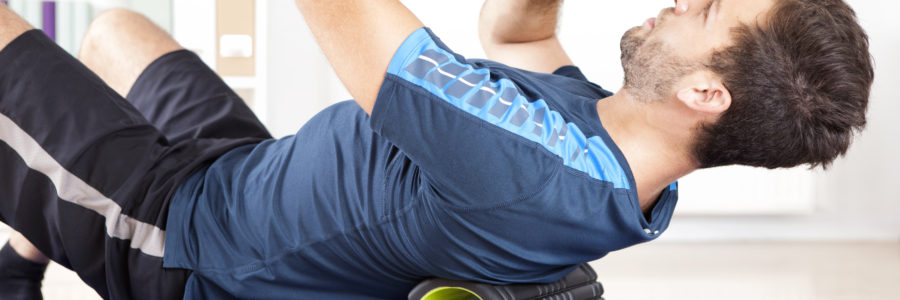
Low Back Pain Relief with These 8 Tips
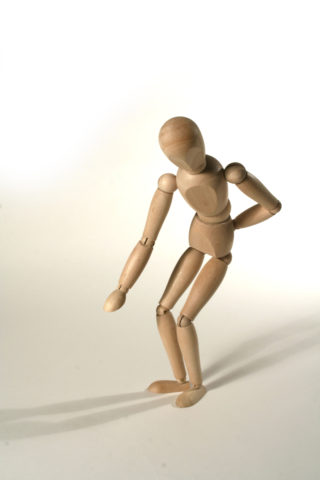
Low back pain is experience by over 80% of Americans during their lifetime. It is one of the most common complaints medical professionals hear. You’ve probably had clients complain about a stiff, achy lower back. Therapeutic massage and any other types of bodywork can relax stressed muscles and temporarily relieve pain from acute attacks. But if your client has chronic low back pain issues, they may need more structured interventions. Offer these tips to help your clients achieve a strong, flexible and injury-free back.
Causes and Impact
Low back pain can result from many causes.
- Injury
- Improper posture
- Sedentary lifestyle
- Strained ligaments
- Medical conditions like disk disease, osteoporosis, cancer, and some infections
Regardless of the cause, the impact on daily life can be immense. Stiff, achy muscles and swollen ligaments make it difficult to perform normal activities. Persistent pain can lead to lost work hours and a lower overall quality of life.
Get Moving
When the pain is at its worst, your client will be looking for fast relief. After therapeutic massages, exercise is the single best solution to muscle pain and tightness.
- Sitting or standing in one position for too long cause tension and pressure that can add up over time. Encourage sedentary clients to get up and exercise. Aerobic activity triggers the release of endorphins. These chemicals reduce your perception of pain, and acts a mild muscle relaxant.
- Regular exercise strengthens weak muscles, which reduces strain on the lower back. Suggest some simple exercises to strengthen your client’s core muscles.
- In addition to aerobic and strengthening exercises, advise your client to include stretches to increase flexibility in tight, knotted areas.
Correct Posture
Talk to your client about using good posture throughout their day.
- Educate your client on the benefits of ergonomically correct workstations and lumbar supports. Maintaining a healthy curve in the spine reduces stress on ligaments, discs, and joints.
- If you do not offer chiropractic services, refer your client to a trusted colleague. Periodic spinal adjustments, in conjunction with therapeutic massage and exercise, will correct misalignments that cause lower back pain.
Relax and Heal
After your massage session, suggest some self-care procedures your client can do at home to help them relax overworked muscles and let their bodies heal.
- Alternate ice and heat. Heat increases the flow of warm, nourishing blood to speed healing. Ice calms irritated nerve endings and decreases painful swelling.
- Talk to your client about sleeping positions. Lying on the side with a pillow between the knees reduces strain on the lower back and hips. Those who prefer to sleep on their backs should place a pillow under their knees. Sleeping on the stomach should be avoided.
- Some lower back pain has been linked to mental or emotional stress. Suggest balancing activities that soothe mind and body, like yoga, meditation, or deep breathing exercises.
Talk to your client about their pain. Take a few minutes to help them make a personalized plan, tailored to their current level of physical ability, pain tolerance, and commitment.
Low back pain doesn’t have to take over your client’s life. With the right combination of self-care and professional treatment, you can help your clients achieve a strong, flexible, and healthy spine.
Learn more today about how you can help people with low back pain with a career in massage therapy

Easy Spring Exercises for Summer Preparation
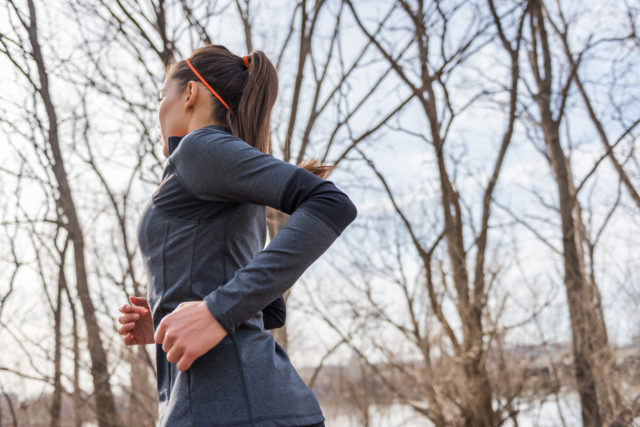
With winter’s end looming near, the thoughts of many are turning to shorts and bikini season. After months of thick, shapeless sweaters and holiday indulgence, your clients are probably looking for simple spring exercises to shed extra pounds and firm up neglected muscles. Offer these easy spring exercises to help your client achieve a their beach-ready body.
The Basics
Before starting any workout plan or routine, have your client check with their primary physician to make sure they are healthy enough.
The effectiveness of any exercise routine depends on commitment and consistency. Even light, low-intensity workouts can have a significant impact on general health and physical appearance, if done on a regular basis. Workouts should be done at least 3 times per week. For faster results, do spring exercises up to five times per week.
Most fitness experts suggest 30-60 minutes of vigorous activity each day. Those who can’t commit to a large block of time will still see benefits with a series of 10-15 minute workouts.
- Always start with a light warm-up, like jogging in place.
- Fat-burning aerobic activities are just as important as muscle-toning moves.
- Start off easy. Weight and repetitions can always be added later. Don’t overdo it!
- Finish your spring exercises with some easy stretches.
- You can’t out-exercise a bad diet. Caution clients to limit calories for ultimate results.
- Hydration is important. Health experts suggest at least 64 ounces of water each day.
Easy Spring Exercises
A beach-ready body has toned arms, legs, buttocks, and a strong core. These simple moves can add some perk to your clients’ spring exercises. All of these easy spring exercises can be done without special equipment.
- Burpees
Burpees are a wonder exercise. There are variations for every fitness level. When done correctly, Burpees hit almost every major muscle group in the body, but are especially good for the quads, abs, and shoulders. They also increase heart rate to aerobic levels when done quickly.
- Lunges and Squats
Sleek, muscular leg and gluteal muscles are the best accessories for summer outfits. Lunges and squats sculpt and strengthen the quadriceps, gluteus maximus, and hamstrings. Add in some weighted arm motions to increase heart rate to fat burning levels.
- Curls
Bicep and triceps curls focus on two out of three major muscle groups in the arm. The triceps sit at the back of the arm and can become loose, flabby, and unattractive from disuse. Curls with hand weights, or using a machine at the gym, can reduce unflattering pockets of cellulite.
- Planks
One simple spring exercise that is guaranteed to challenge is the plank. Planks can sculpt abs without a single crunch or sit-up. They also work the glutes, back, and chest for an all-over toning session. This move can be easily modified to avoid pressure on injured body parts.
- Bridges
Bridges target gluteal muscles, where stubborn pockets of fat can be hard to shape up. They also strengthen the hamstring muscles in the back of the leg for a smoother looking limb.
The number of sets and repetitions depends on current physical condition. Those who are just starting their fitness journey should shoot for one set of 15 repetitions of each move (hold plank for 15 seconds), and add sets as strength increases. Those who are more active should add 3 to 4 sets of 15 repetitions to their regular spring exercises.
Help your client achieve their best summer body. Get them started with these easy spring exercises today, and they will be sure to thank you in a few weeks!





